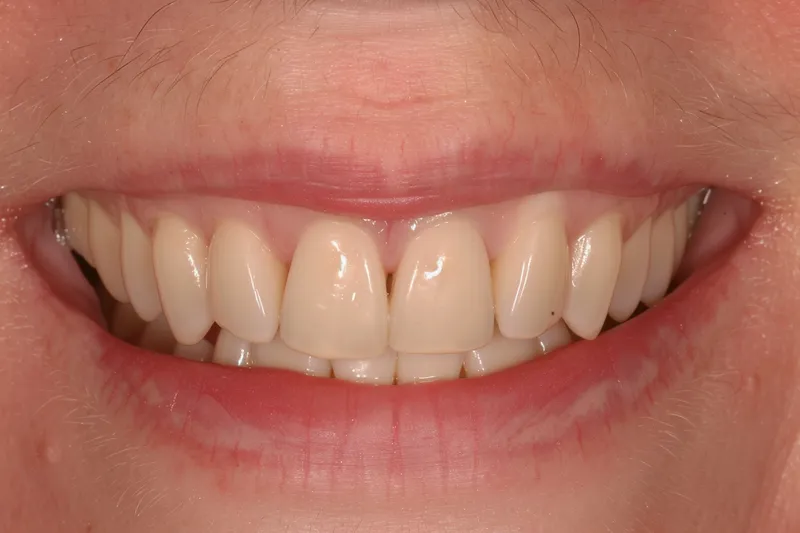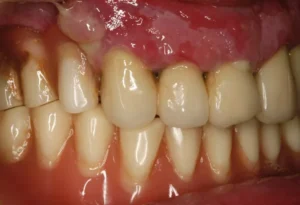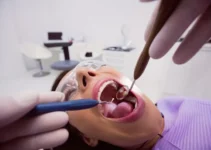Gum recession is a prevalent dental condition where the margin of the gum tissue surrounding the teeth wears away or pulls back, exposing more of the tooth or the tooth’s root. This problematic occurrence can lead to various complications such as sensitivity, severe tooth decay, and even tooth loss if not addressed timely. The causes of gum recession are manifold, including aggressive tooth brushing, poor oral hygiene, periodontal diseases, and genetic predisposition. In this article, we delve into understanding these causes in depth, the potential consequences if left untreated, and the most effective treatments available to manage and prevent further gum recession.
Understanding Gum Recession
What is Gum Recession?
Gum recession is a dental condition where the margin of the gum tissue surrounding the teeth wears away or pulls back, exposing more of the tooth or the tooth’s root. This condition can lead to increased sensitivity and potential tooth loss if left untreated. Gum recession is often a slow process, and many people do not realize they have it until it has become more severe. Researchers have found that nearly 88% of people over the age of 65 experience gum recession in at least one tooth.
It is crucial to understand that gum recession is not just a cosmetic issue but a sign of underlying dental health problems. The exposure of the tooth’s root can make it more susceptible to decay and damage. Moreover, individuals with receding gums might experience discomfort and a significant impact on their overall oral health.  Gum recession can be caused by various factors, including periodontal disease, aggressive tooth brushing, and genetic predisposition. Identifying the root cause is key in developing an effective treatment plan to manage and address gum recession properly.
Gum recession can be caused by various factors, including periodontal disease, aggressive tooth brushing, and genetic predisposition. Identifying the root cause is key in developing an effective treatment plan to manage and address gum recession properly.
Common Causes of Gum Recession
Understanding the common causes of gum recession can help in its prevention and early detection. One of the primary causes is periodontal disease, which is an infection of the gums and bone that support the teeth. Periodontal disease can lead to the destruction of gum tissue and the bone that holds teeth in place, resulting in gum recession.
Aggressive tooth brushing is another significant cause. Many people believe that brushing their teeth harder will result in a cleaner mouth, but this can actually wear down the enamel and push the gums back. Using a soft-bristled toothbrush and gentle brushing techniques is recommended to avoid this issue.
Other causes include:
- Genetic predisposition: Some people are more prone to gum recession due to their genetic makeup.
- Hormonal changes: Especially in women, hormonal changes can make the gums more sensitive and vulnerable to gum recession.
- Inadequate dental care: Poor oral hygiene can lead to plaque build-up, which can cause gum recession.
- Smoking: Tobacco use is known to be a significant risk factor for developing gum recession.
Symptoms and Early Signs
Detecting gum recession early can help in preventing further damage and potential tooth loss. One of the first signs of gum recession is often tooth sensitivity. As the gums recede and expose more of the tooth or its root, individuals may notice increased sensitivity to hot, cold, or sweet foods and beverages.
Other early signs include:
- Visible roots: As gums recede, the roots of the teeth become more visible, which can be one of the most noticeable signs.
- Longer-looking teeth: Receding gums can make teeth appear longer than usual.
- Notches or small dents near the gum line: These notches can be signs of gum recession and should be checked by a dental professional.
- Bleeding gums: Frequent bleeding during brushing or flossing can signal underlying gum issues, including gum recession.
If you notice any of these symptoms or suspect you may have gum recession, it is essential to seek professional dental advice. Early intervention can help manage the condition effectively and prevent more serious complications. For a comprehensive understanding of oral health, continue exploring our other articles.
Consequences of Gum Recession
Gum recession, medically referred to as gingival recession, is a common dental condition where the gums pull back from the tooth surface, exposing the roots of the teeth. This phenomenon can have a wide range of implications for your oral health. One of the most immediate consequences of gum recession is increased tooth sensitivity. When the gums recede, the dentin layer of the tooth is exposed, which is much more sensitive to external stimuli such as hot and cold temperatures. This can lead to acute discomfort during eating and drinking.
Another significant consequence is the higher risk of tooth decay and cavities. The roots of your teeth are not covered by the protective enamel layer that the crowns of your teeth have. This makes them more vulnerable to bacterial infections and the formation of cavities. Additionally, gum recession can cause your teeth to appear longer than normal, which can be aesthetically unpleasing and may affect your confidence. This visual change is often referred to as having a “long tooth” appearance.
Moreover, gum recession can lead to periodontal disease, a severe gum infection that damages the soft tissue and, without treatment, can destroy the bone that supports your teeth. Signs of periodontal disease include swollen red gums, bleeding while brushing or flossing, persistent bad breath, and even loose teeth. The progression of periodontal disease can be mitigated with early intervention but ignoring the symptoms can result in prolonged discomfort and complex treatments.
Treatments for Gum Recession
Gum recession is a common dental issue that occurs when the gum tissue surrounding the teeth wears away or pulls back, exposing more of the tooth or its root. This can lead to a host of dental problems, including tooth sensitivity, increased risk of decay, and an unaesthetic smile. Understanding the various treatments available can help in managing and mitigating the effects of gum recession.
There are multiple treatment options available for gum recession, including both non-surgical and surgical interventions. The choice of treatment depends on the severity of the recession, the patient’s overall oral health, and other individual factors. Additionally, preventive measures can help in avoiding further gum recession.
Non-Surgical Treatments
Non-surgical treatments for gum recession primarily focus on scaling and root planing (SRP) and antibiotics. SRP is a deep cleaning procedure that involves removing plaque and tartar from below the gum line and smoothing the root surfaces to prevent bacterial buildup. This procedure can be effective in reducing inflammation and halting the progression of gum recession.
Another non-surgical treatment option involves the use of topical or oral antibiotics to control bacterial infections that contribute to gum disease and recession. These antibiotics can be used in conjunction with SRP to enhance the effectiveness of the treatment. Additionally, antimicrobial mouth rinses may be prescribed to reduce bacteria in the mouth. Moreover, patients can benefit from desensitizing agents applied to the exposed tooth roots, which can help in reducing sensitivity and discomfort associated with gum recession. These agents can be in the form of special toothpaste or professional treatments administered by a dental professional.
Surgical Options
When non-surgical treatments are insufficient to address gum recession, surgical options may be considered. One common surgical procedure is a gum graft, where tissue is taken from another part of the mouth or a donor source and grafted onto the affected area. This helps in covering the exposed root and improving the appearance and health of the gum line.
Another surgical option is the use of regenerative techniques such as guided tissue regeneration (GTR). This procedure involves placing a specialized membrane between the existing gum tissue and the bone, promoting the growth of new bone and gum tissue in the area of recession. GTR can be particularly beneficial in cases where the underlying bone has been damaged.
Flap surgery, another surgical intervention, involves lifting the gums to remove tartar buildup and then securing them back in place. This helps in reducing the pocket depth and allows the gums to fit more snugly around the teeth, thereby reducing the progression of gum recession.
Preventive Measures
Preventive measures play a crucial role in managing gum recession and avoiding further deterioration. Good oral hygiene practices, including regular brushing and flossing, can significantly reduce the risk of gum disease and recession. It is important to use a soft-bristled toothbrush and gentle brushing techniques to avoid causing additional trauma to the gums.
Routine dental check-ups and cleanings are also essential in maintaining gum health. Dental professionals can detect early signs of gum recession and provide appropriate interventions to prevent its progression. Additionally, they can offer personalized advice on oral care techniques and products suitable for individuals with gum recession.
Other preventive measures include quitting smoking and managing systemic conditions such as diabetes, which can exacerbate gum problems. A balanced diet rich in vitamins and minerals, particularly vitamin C and calcium, can also support gum health and reduce the risk of recession.
Addressing factors such as teeth grinding or clenching, which can contribute to gum recession, is also vital. Using a night guard or other protective devices can help protect the gums and teeth from excessive forces.
By understanding and implementing these treatments and preventive measures, individuals can better manage gum recession and maintain their oral health. For more detailed information on related topics, consider reading our other articles that delve into various dental health issues and treatments.
Understanding Gum Recession: Frequently Asked Questions
Gum recession is a common dental issue that affects many people. It’s essential to understand the causes, how it can impact your oral health, and the available treatments. Here are some frequently asked questions to help you gain more insights into gum recession.
What are the main causes of gum recession?
Gum recession can be caused by several factors, including aggressive tooth brushing, which can wear away the enamel and gums; periodontal diseases, which destroy the supporting bone and gum tissue; and poor oral hygiene, which allows plaque to build up and harden, leading to gum recession. Other contributing factors include smoking, hormonal changes in women, misaligned teeth, and a genetic predisposition to gum disease.
What are the potential consequences of untreated gum recession?
Untreated gum recession can lead to several severe consequences, including increased sensitivity to hot and cold due to exposed tooth roots, higher risk of tooth decay, and aesthetic concerns. More importantly, it can result in tooth loss if the recession reaches an advanced stage where the support structures of the teeth are compromised. Thus, it’s crucial to address gum recession promptly.

My name is Salman Kapa, a 73-year-old expert in bone regeneration and dental implantology. With decades of experience in the field, I am dedicated to advancing our understanding of oral health and hygiene. Through my research and writing, I aim to contribute to the development of innovative solutions in dental care.




